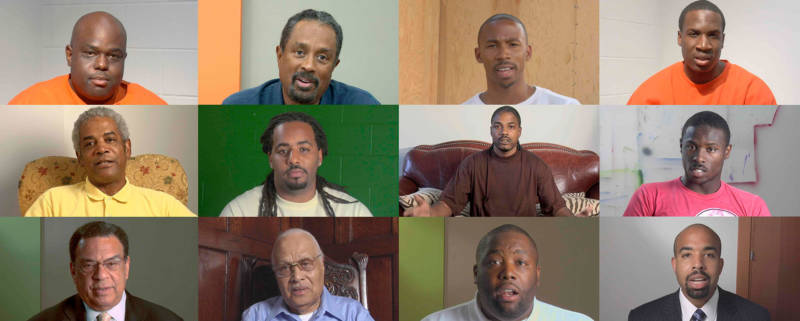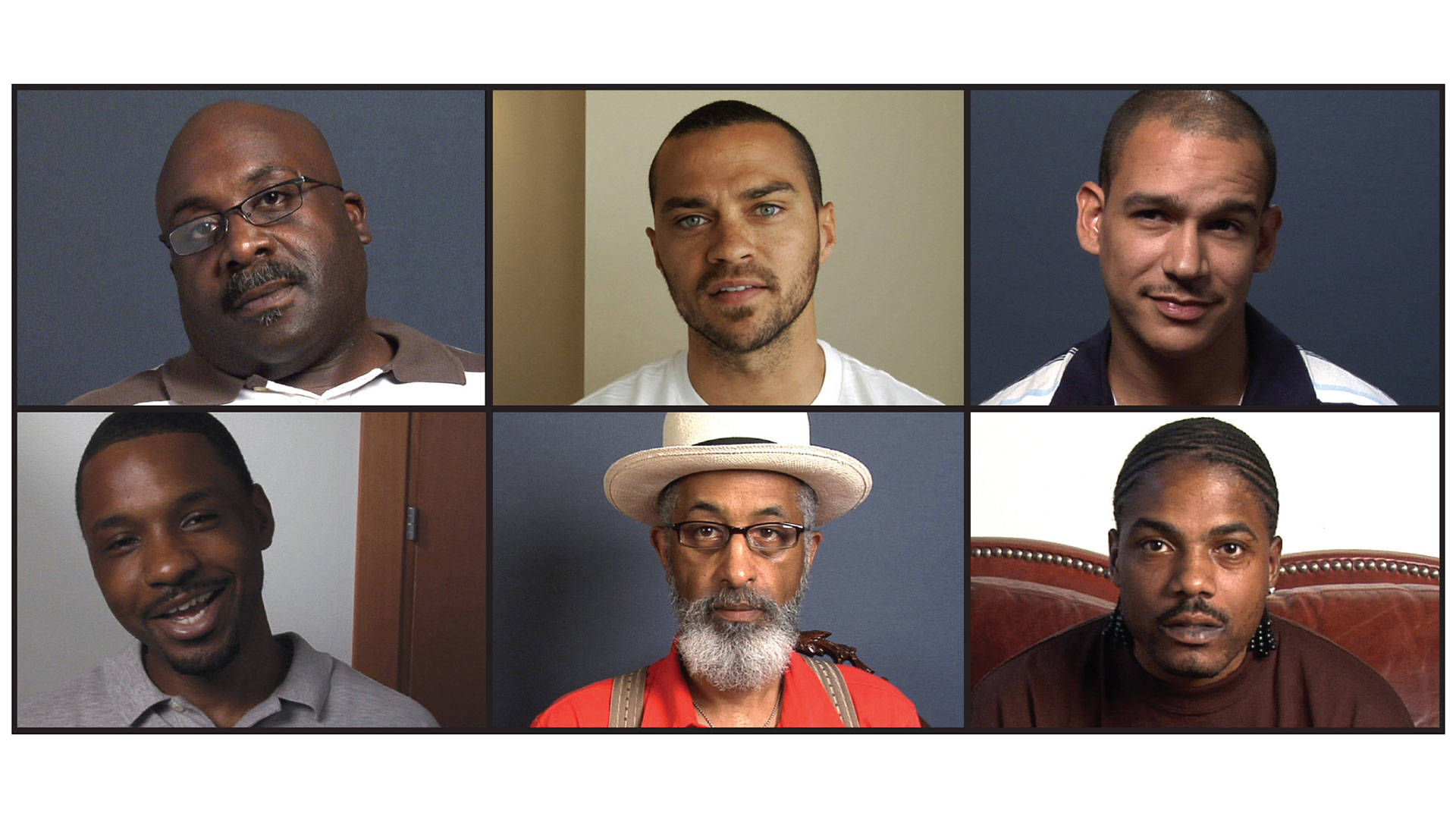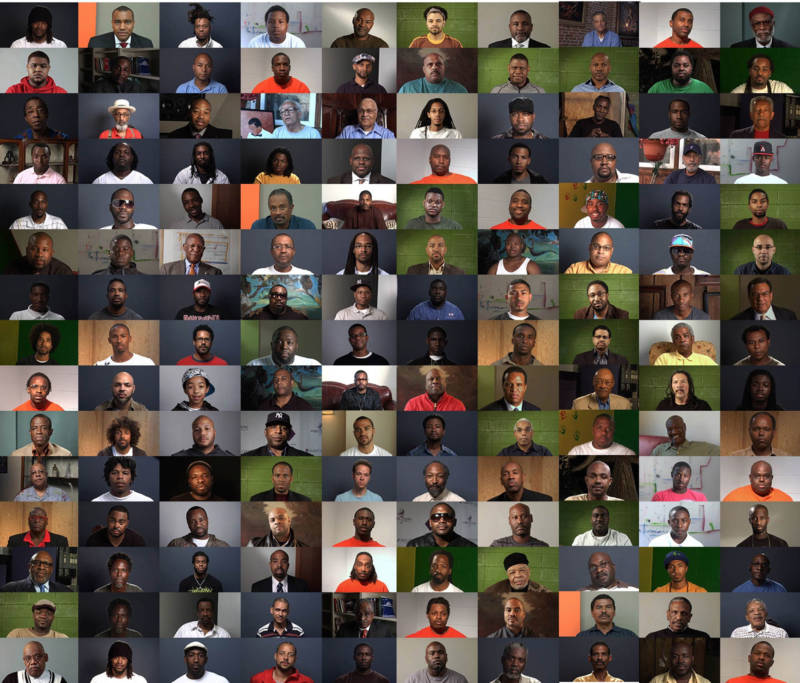Walking into Question Bridge: Black Males, a newly acquired multimedia exhibit at the Oakland Museum of California, I’m immediately enveloped in hushed darkness. The space is quiet, plainly decorated, with the walls, floors, and benches practically disappearing in a muted, uniform black. Viewers watch video recordings with an almost reverent silence, their eyes fixed on the room’s only source of light: an array of brightly lit screens, with a black man in the center of each.
Directed by Chris Johnson and Hank Willis Thomas, in collaboration with Bayete Ross Smith and Kamal Sinclair, Question Bridge: Black Males has grown from its roots as a video installation into a full-fledged movement of national significance. Originally shown at OMCA in 2012, the project was commended for its presentation of the black male narrative — and, most notably, its diversity across the American population.

“[The artists] wanted to make sure they covered as many different kinds of folks as possible. Different cities, older men, younger men. Different occupations,” says Rene de Guzman, curator of the OMCA showing. “Of course you can’t cover every single person, but I think [viewers] had a sense of like, this is a really broad range of folks who are participating in the conversation.”
The breadth clearly comes across. When watching even a small snippet of the three-hour long video reel featuring 160 interviewees, it’s impossible not to notice the wide range black males from all walks of life — young boys, established judges, current prison inmates, famous actors and many more.
“One [hope of the exhibit] is for folks to understand that black males are as dynamic, interesting, and complicated as everyone else. That folks will stop objectifying who they are — they’re human beings…[Their narratives] are expansive and complex and incredibly interesting,” shares de Guzman.






